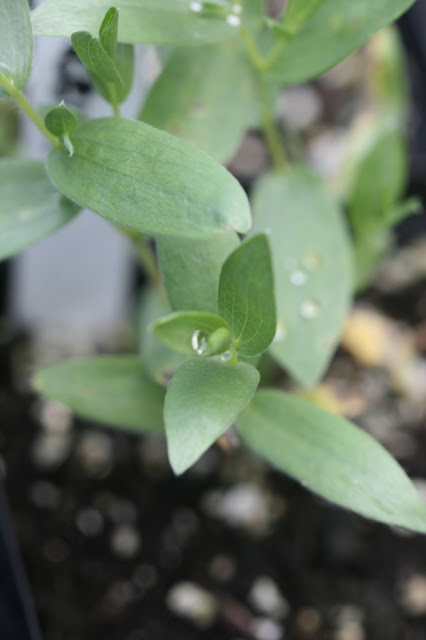Western silver or silky aster (Symphyotrichum sericeum) is another rare aster in Florida; only vouchered from Gadsden County near the Georgia border. Ours is known as variety microphyllum. While the standard variety is found throughout the south from Texas and all states north to Quebec and Ontario in a mid-North-American distribution, our variety is found throughout the Deep South from Texas to Virginia. Some taxonomists give var. microphyllum unique species status, referring to it as Syphyotrichum pratense.
This perennial aster is reported to occur in a variety of open habitats and does not seem to be dependent on a narrow range of growing conditions. I have not seen this aster in its natural growing habitat in Florida. The plants photographed were purchased and originate from out-of-state stock. To date, they have prospered in my landscape in typical sandy soils and in relatively high light. As it's common names indicate, the foliage is covered by silky silvery "hairs" (trichomes) that give it a very distinct appearance. Plants emerge in the early spring and form willowy stems that reach a mature height of about 2-3 feet and a width of 1-2 feet. Numerous stems are produced on each plant and flowering occurs at the ends of each.
The flowers are very similar in color to our more-common silver aster (S. concolor). The ray petals are numerous, linear in shape, and are cornflower blue in color. The disc flowers are white. Each flower head is about 1 inch in diameter. Flowering occurs in fall - September through October. Like all asters, they are excellent nectar sources for a wide variety of bees, butterflies, and other pollinators. My plants are still small, but during the limited blooming period of the one photographed above, it attracted a great many different bees. This species might also serve as a host for the pearl crescent.
As I've written before, very few Symphyotrichum asters have been grown commercially by the native plant nurseries affiliated with FANN - the Florida Association of Native Nurseries. Though I would have preferred to use Florida stock here, it was not possible and I'm experimenting with these. Over the years, I have had mixed results - some species have done excellent while others eventually perish. I hope that these will be in the former group and that I will be able to make it available to other native plant gardeners through my hobby nursery, Hawthorn Hill. Over the next year, I'll get an answer to this question. This is a beautiful wildflower and a wonderful addition to a pollinator/wildflower garden.




No comments:
Post a Comment
Please let me know if this site and the various postings have been useful to you.